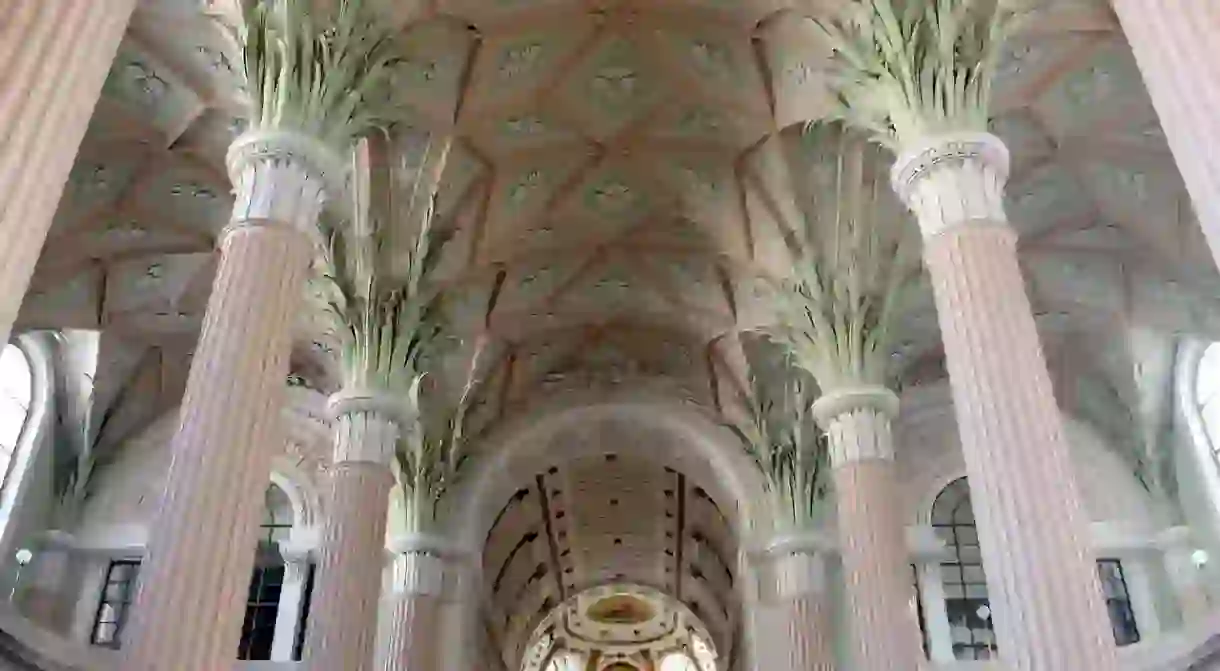Leipzig's Most Beautiful Churches and How to Visit Them

Leipzig is becoming increasingly popular among foreign travellers, and it’s hardly a surprise considered how well the Saxon city bridges the gap between old and new. Leipzig has become a hub for young creatives and established artists, but the city also has an abundance of beautiful historic buildings, including some incredible churches. Here’s a list of the most beautiful ones and how to visit them.
St Nicholas Church
St Nicholas Church is not only considered to be Leipzig’s most beautiful place of worship, but it’s also a place of great historical significance. The year 1989 saw tens of thousands of people gather in the church plaza for peaceful demonstrations that helped pave the way to the fall of the Berlin Wall and a reunified Germany the same year. The façade is shaped by Romanesque, Gothic and Baroque elements, and it’s worth stepping inside to view the rose-and mint-coloured stucco ornaments that climb up the columns to the vaulted ceiling. The church is open daily and can be entered for a charge of €5.

St Thomas Church
For the first half of the 18th century, one of Germany’s greatest composers, Johann Sebastian Bach, was the music director at St Thomas. A statue outside the church honours his time in Leipzig. The church itself dates back to 1212, but over the following centuries, the appearance of the church was altered and extended several times. The soaring octagonal church bell tower, for example, was only added in the Renaissance era and can be climbed for a small fee. Other than that, visiting the church is free of charge.
Russian Memorial Church
You’ll see the gold onion dome from afar, as it sets itself apart from the canopy of Leipzig’s Friedenspark that stretches out behind the Russian Memorial Church. Construction finished in 1913, exactly 100 years after the Battle of the Nations, to commemorate the 130,000 Russian soldiers who fought against the Napoleonic troops. The church is a replica of the tent-roofed Church of the Ascension in Moscow that revolutionised the Russian ecclesiastical architecture in the mid-16th century. Visitors are welcome daily and can enter the church free of charge, though donations are appreciated.
St Peter’s Church
Leipzig’s St Peter Church is quite the sight to see. Succeeding a 16th-century church, St Peter was built in the Gothic Revival style and has stunned people since it opened its doors in 1885 with its sheer size and height. At 88 metres (289 ft), it’s Leipzig’s tallest church, and a climb up the tower is rewarded with panoramic views of Leipzig. If you want to explore the interior, you can join one of the weekly services, book tickets for one of the concerts, lectures and many other cultural events that take place here, or visit during the open church hours from Monday to Friday.

Luther Church
The construction of Leipzig’s neo-Gothic Luther Church marked the 400th birthday of the man who led the Protestant Reformation in the 16th century. The floor plan follows the shape of a Latin cross, and the main portal is decorated with a mosaic depicting a victorious Lamb of God with the Luther rose flaunted above. Inside, the chancel is adorned with intricate wood carvings of a lion, a man, an eagle and an ox – the symbols of the four evangelists. If you want to see the church from inside, you’re best advised to join a service or one of the public events that are regularly announced on the website.
Michaelis Church
The Michaelis Church is located north of the city centre and was constructed after a stark influx of Leipzig’s population. The contorted sandstone façade shows an architectural mix of Historicism and Renaissance elements and features figurines and sculptural décor, while on the inside, the benches, chancel and the gallery are all embellished with wood-carved details. The church is primarily used for religious services and does not schedule regular visiting hours, so keep that in mind if you want to head up there during your time in the city.
Hohen Thekla Church
While the Hohen Thekla Church might not be beautiful in the sense of the overwhelming, glitzy splendour you often encounter in Baroque and Gothic cathedrals, the church stuns with a fascinating history. The two-metre-thick stone walls of the Romanesque single-nave church were erected between 900 and 1100. On the western side, three French cannonballs were walled into the plaster to commemorate the 1813 Battle of the Nations. Unfortunately, a 1959 fire destroyed the entire historical furnishings along with the altar, the organ and church bells. Currently, you can only view the church from outside.
Did you know – Culture Trip now does bookable, small-group trips? Pick from authentic, immersive Epic Trips, compact and action-packed Mini Trips and sparkling, expansive Sailing Trips.













